Your Eco-Friendly Guide to Renovating Your Bathroom

co-founder
- Why Consider an Eco-friendly Bathroom Remodel?
- Eco-friendly Planning:
- Water Conservation:
- Sustainable Materials:
- Energy Efficiency:
- Professional Help:
- Common Mistakes to Avoid:
- Natural Light:
- Eco-friendly Paints:
- Water Heating:
- Recycled Content and Locally-Sourced Materials:
- Greywater Systems:
- Disposal of Old Materials:
Bathroom renovations are not just about improving the aesthetics of your space or increasing your home's resale value. Today, more than ever, it's about integrating sustainability and creating a bathroom that's not just beautiful, but also kind to the environment. Here's your comprehensive guide on how to approach your eco-friendly bathroom remodel.
Why Consider an Eco-friendly Bathroom Remodel?
Many homeowners overlook the potential for incorporating green solutions into their bathroom remodel. Besides contributing to a healthier planet, an eco-friendly bathroom remodel can help reduce your energy costs and create a healthier indoor environment. In addition, eco-friendly materials often have a unique aesthetic that adds to the charm of your bathroom.
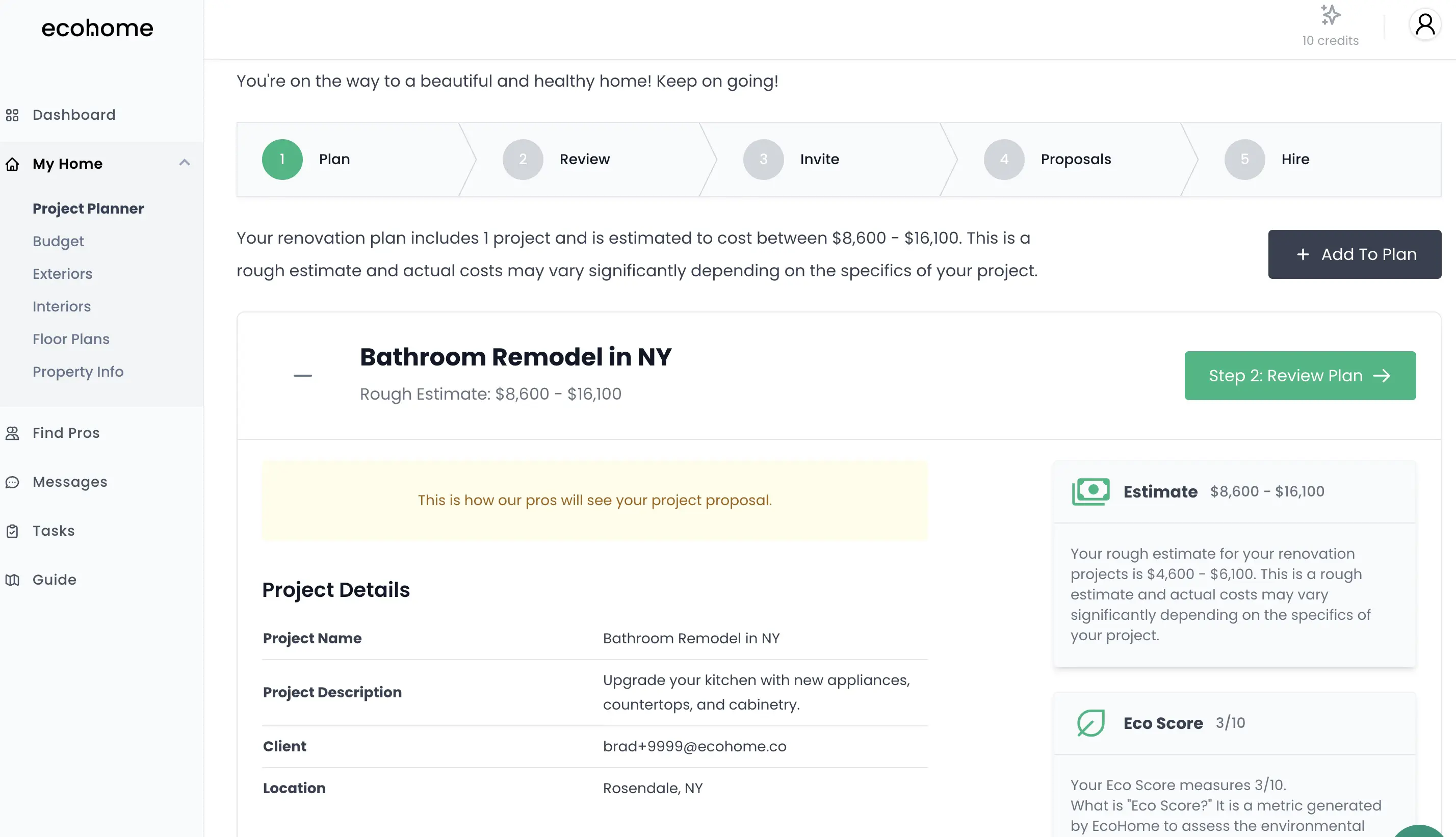
Eco-friendly Planning:
The first step in any bathroom remodel is planning. With an eco-friendly remodel, this involves evaluating what parts of your current bathroom can be reused or recycled, and what parts need to be replaced. Try to incorporate as many energy-efficient and sustainable materials as possible. Planning also includes setting a budget. Keep in mind that while some eco-friendly solutions might have a higher upfront cost, they often pay off in the long run through energy savings and durability.
Water Conservation:
Water conservation is a key element in any eco-friendly bathroom remodel. The bathroom is, after all, where we consume most of our household water - nearly 60% according to the U.S. Environmental Protection Agency.
Low-Flow Faucets and Showerheads: By installing low-flow faucets and showerheads, you can significantly reduce your water use. These fixtures are designed to use less water per minute than traditional models, while still providing sufficient pressure for a comfortable shower or hand washing. A typical showerhead uses 2.5 gallons of water per minute, while a low-flow model uses 2.0 gallons or less - a reduction of at least 20%.
Dual-Flush Toilets: Consider upgrading to a dual-flush toilet. Unlike traditional toilets that use the same amount of water regardless of the type of waste, dual-flush toilets have two options: a half flush for liquid waste and a full flush for solid waste. This can result in significant water savings over time. Toilets contribute to nearly 27% of our water usage at home!
Water-Efficient Bathtubs: If you enjoy taking baths, consider a water-efficient bathtub designed to provide a deep soak while using less water. These tubs are typically smaller than standard tubs but are designed with a deeper basin.
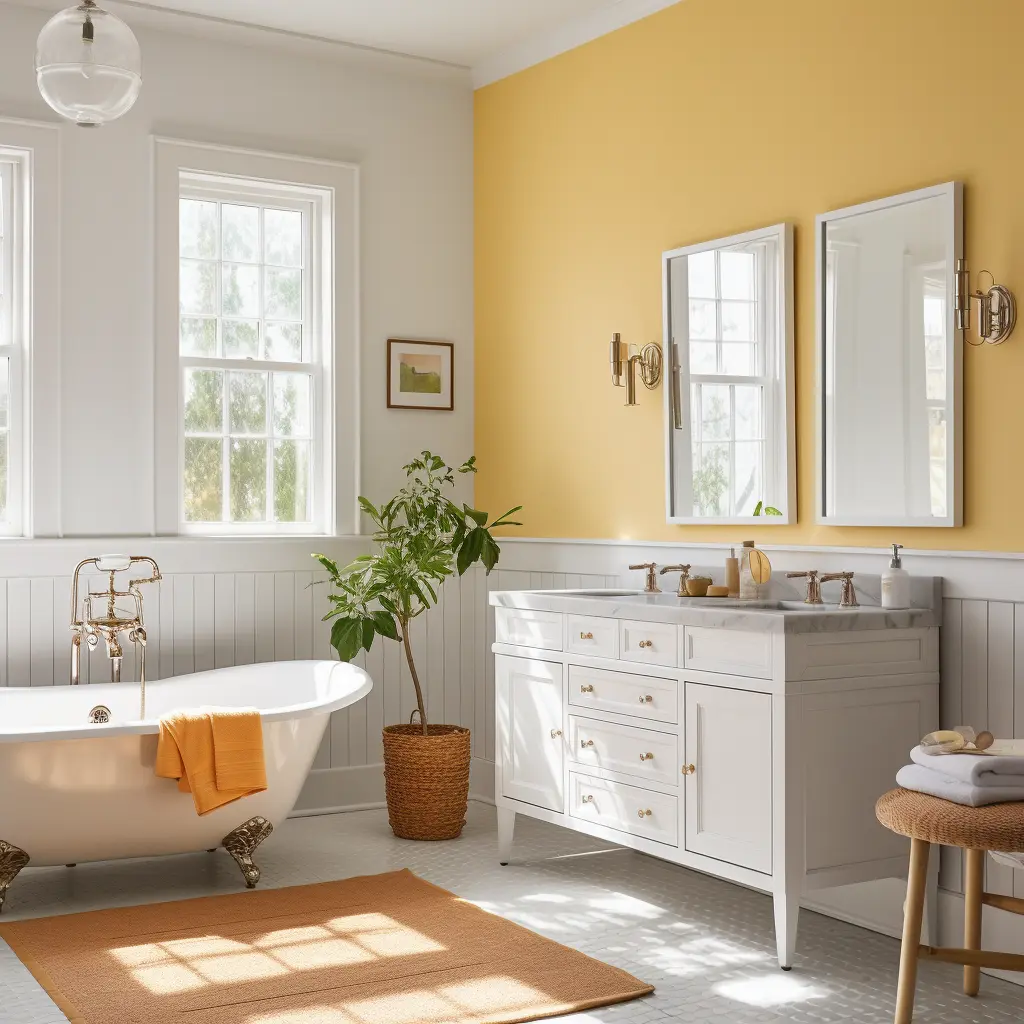
Sustainable Materials:
Choosing sustainable materials is another important aspect of an eco-friendly bathroom remodel. These materials not only reduce your impact on the environment but also can add unique beauty to your bathroom.
Bamboo or Reclaimed Wood: For cabinetry, consider using bamboo or reclaimed wood. Bamboo is a rapidly renewable resource that grows much faster than trees, making it a more sustainable choice. Reclaimed wood, on the other hand, gives a second life to wood that has been previously used, reducing the demand for new lumber. If neither of these is an option, talk with your local custom cabinet maker and see what they recommend. The best ones will be able to help you figure out the right approach.
Recycled Glass Countertops: Recycled glass countertops are a trendy and eco-friendly choice. They're made from post-consumer glass, reducing the amount of waste that ends up in landfills. These countertops are available in a wide range of colors and finishes, making them a versatile option for any bathroom design.
Recycled Tiles: Tiles made from recycled materials are another excellent choice for your bathroom floors and walls. These can be made from a variety of materials, including glass, ceramic, and even metal.
Energy Efficiency:
Energy efficiency is a crucial element in any green remodeling project. In a bathroom, this primarily means focusing on lighting and ventilation.
LED Lights: LED lights are a significant upgrade from traditional incandescent bulbs. They use up to 80% less energy and last 25 times longer. Even compared to CFLs (compact fluorescent lamps), LEDs still consume less energy and last longer. They're available in a wide range of colors and brightness levels, so you can create the exact mood you want for your bathroom. Additionally, they do not contain mercury, unlike CFLs, making them more eco-friendly.
Energy-Efficient Ventilation Fans: An energy-efficient ventilation fan can help control humidity in your bathroom, preventing the growth of mold and mildew. Look for models that have an Energy Star rating, as these fans use 60% less energy on average compared to non-certified models. Moreover, modern fans are quieter and more efficient at moving air than older models.
Insulation: If you're remodeling your bathroom, it's an excellent opportunity to inspect and upgrade the insulation. Well-insulated walls can help keep your bathroom warm in the winter and cool in the summer, reducing the need for heating and cooling and, as a result, your energy consumption.
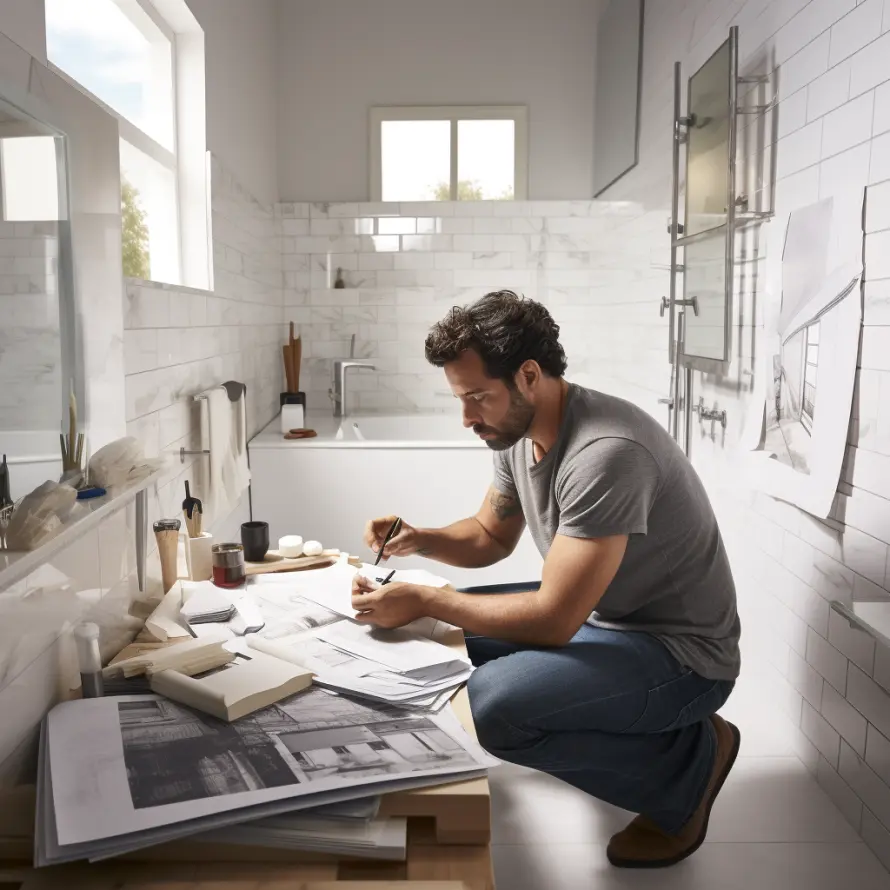
Professional Help:
While it's possible to manage an eco-friendly bathroom remodel on your own, hiring a professional contractor with experience in green building can help ensure the best outcome.
Expert Guidance: An experienced contractor can help you navigate the wide array of eco-friendly products on the market, suggesting the best materials and technologies for your needs and budget. They can also help ensure that your remodel is executed efficiently, minimizing waste during construction.
Building Codes and Standards: Green building often involves using new technologies and methods. A professional contractor will be familiar with the building codes and standards related to these techniques, ensuring your remodel is up to code.
Certification: If you're considering selling your home in the future, an eco-friendly remodel can be a significant selling point. Some contractors can help you get certification from a green building program like LEED (Leadership in Energy and Environmental Design), which can increase your home's value.
Common Mistakes to Avoid:
Lifecycle Considerations: One common mistake in green remodeling is failing to consider the full lifecycle of the materials used. It's essential to choose materials that are not only produced sustainably but are also durable and recyclable at the end of their life.
Size Matters: Another common mistake is overbuilding. While it might be tempting to add a large jacuzzi tub or a double vanity, remember that bigger isn't always better from an environmental perspective. The larger your bathroom, the more materials will be needed for its construction and the higher the energy costs for its lighting, heating, and cooling.
Natural Light:
Maximizing natural light in your bathroom not only makes the space more inviting but can also reduce your reliance on artificial lighting. Consider these options:
Skylights: A skylight can flood your bathroom with natural light, transforming the space and saving energy. Some skylights can even be opened to allow for natural ventilation.
Windows: If your bathroom layout and privacy concerns allow, installing a window or expanding an existing one can dramatically increase the natural light in the room. Consider double-glazed windows for better insulation and frosted glass for privacy.
Eco-friendly Paints:
Painting is an integral part of any remodel, and bathrooms are no exception. When choosing paint, look for low-VOC or VOC-free options:
Low-VOC Paints: VOCs, or volatile organic compounds, are harmful chemicals that are released into the air as paint dries. Low-VOC paints release fewer of these chemicals, making them a healthier choice for you and the environment.
VOC-Free Paints: VOC-free paints take it a step further and contain no volatile organic compounds. They provide the same quality and performance as traditional paints but without the harmful emissions.
Water Heating:
Your water heater is one of the largest energy users in your home. Upgrading it can save energy and reduce your carbon footprint.
Heat Pump Water Heaters: Heat pump water heaters use electricity to move heat from the air or ground to heat your water. They can be two to three times more energy-efficient than traditional electric water heaters.
Tankless Water Heaters: Tankless, or on-demand, water heaters heat water only when it's needed, eliminating the energy loss associated with traditional storage water heaters. They're more efficient and can save you money in the long run.
Solar Water Heaters: If you live in a sunny region, a solar water heater can be a great option. It uses the sun's energy to heat your water, reducing your dependence on fossil fuels.
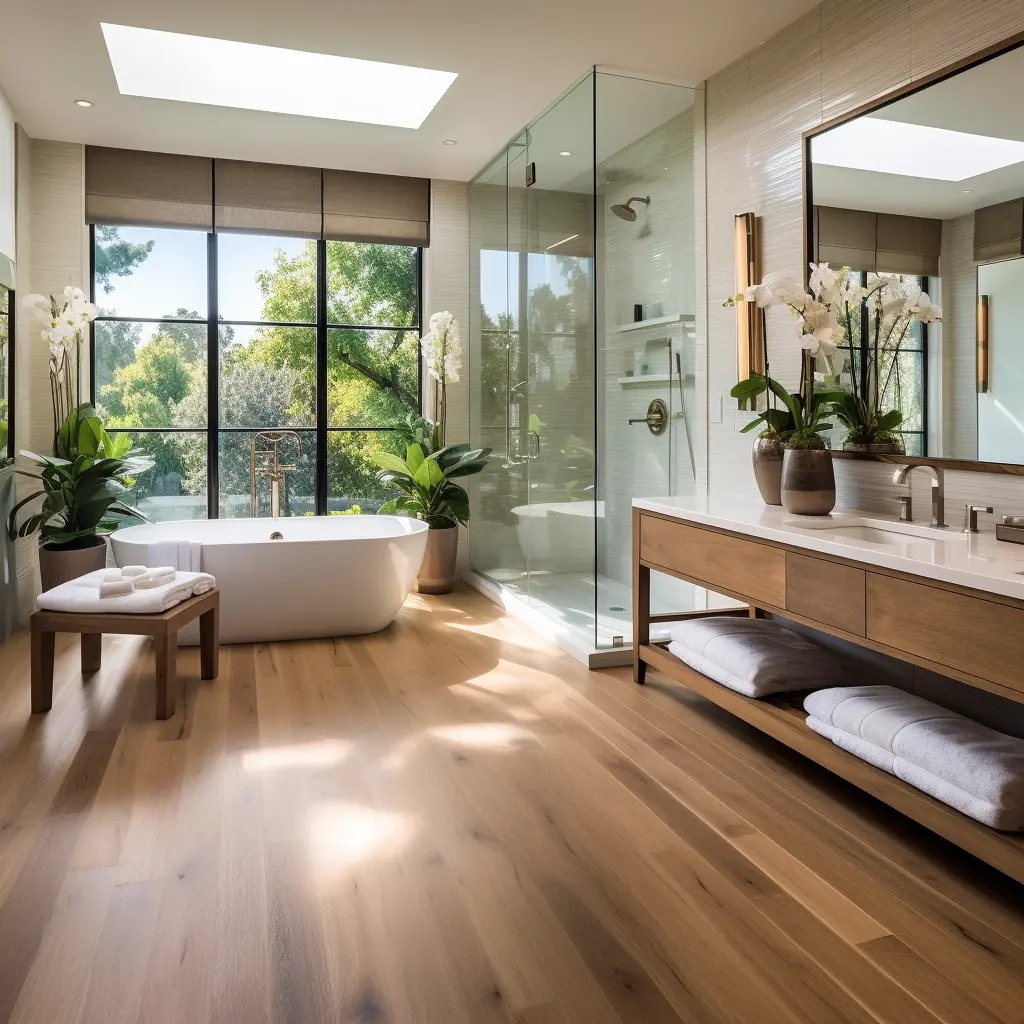
Recycled Content and Locally-Sourced Materials:
When choosing materials for your bathroom remodel, consider options with recycled content and those sourced locally.
Recycled Content: As mentioned earlier, tiles, countertops, and fixtures made from recycled materials can be just as durable and beautiful as those made from virgin materials. They also reduce the demand for new resources and the energy associated with their extraction and processing.
Locally-Sourced Materials: Using locally-sourced materials can reduce the energy associated with transporting products from afar. They can also contribute to the local economy and give your bathroom a unique, local character.
Greywater Systems:
If local regulations allow, consider implementing a greywater system in your bathroom. Greywater systems capture water from your shower and sinks and repurpose it for uses like flushing toilets or irrigating landscaping, saving water and reducing your impact on local water resources.
Disposal of Old Materials:
Finally, it's important to plan for the disposal of materials that are removed during your bathroom remodel. Some materials can be recycled, while others might be reused in different applications. Coordinate with your contractor to ensure that waste materials are disposed of responsibly.
If you have questions, sign-up for Ecohome and we'd be happy to help you get started on your bathroom renovation!
Related Articles
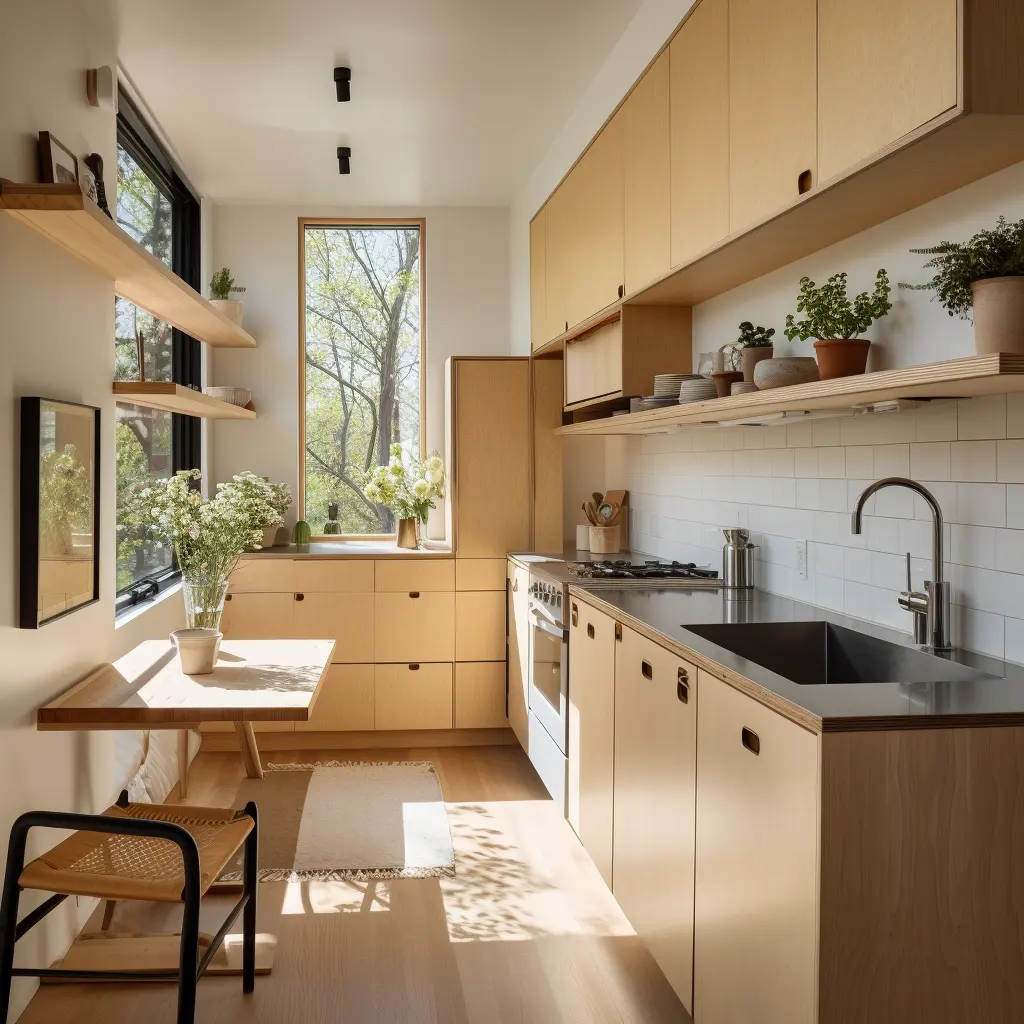
Renovate with EcoHome
EcoHome empowers homeowners to confidently build healthy and comfortable homes for a fair price.
Sign UpLocations View All →
NY
- Albany
- Binghamton
- Buffalo
- Esopus
- Freeport
- Hempstead
- Highland
- Kingston
- Long Beach
- Marlboro
- Mount Vernon
- New Paltz
- New Rochelle
- New York City
- Niagara Falls
- North Tonawanda
- Olivebridge
- Plattekill
- Rochester
- Rome
- Saugerties
- Schenectady
- Shandaken
- Syracuse
- Troy
- Utica
- Valley Stream
- Wallkill
- Woodstock
- Yonkers
NJ
- Bayonne
- Brick
- Camden
- Cherry Hill
- Clifton
- East Orange
- Edison
- Elizabeth
- Jersey City
- Lakewood
- Middletown
- Newark
- Old Bridge
- Passaic
- Paterson
- Toms River
- Trenton
- Union City
- Woodbridge
CT
PA
- Allentown
- Altoona
- Bethel Park
- Bethlehem
- Chester
- Easton
- Harrisburg
- Hazleton
- Lancaster
- Lebanon
- Monroeville
- Philadelphia
- Pittsburgh
- Reading
- Scranton
- Wayne
- Wilkes Barre
MD
- Abingdon
- Baltimore
- Bethesda
- Bowie
- Columbia
- Dundalk
- Ellicott City
- Frederick
- Gaithersburg
- Germantown
- Glen Burnie
- Potomac
- Rockville
- Severn
- Silver Spring
- Towson
- Waldorf

